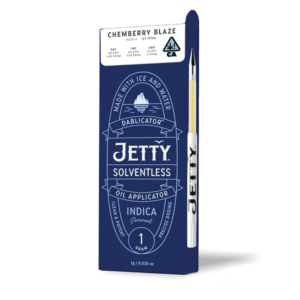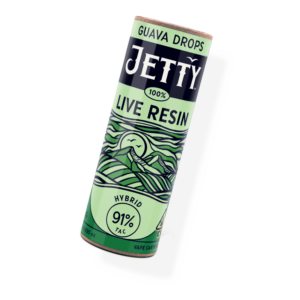- Products
Shop by Type
Shop by Collection
The stickiest, frostiest buds made into your favorite Live Rosin and Live Resin extracts. - Shop
Shop
Find a demo near you for exclusive discounts, product information, free Jetty swag and more! - Merch
Shop by Category
- Learn
LEARN
Learn more about Shelter Project and our Compassion Strains supporting non-profit partners.
- Blog
- Partners
Partners
JETTY STORIES
Lorem ipsum dolor sit amet, consectetur adipiscing elit, sed do eiusmod tempor incididunt ut labore et dolore
magna aliqua. Ut enim ad minim veniam, quis nostrud. You can see our full line up here.
magna aliqua. Ut enim ad minim veniam, quis nostrud. You can see our full line up here.
October 20, 2022
Posted in Education
SHARE THIS
Share on facebook
Share on linkedin
Share on twitter
Each state has different regulations for the growing, selling, and buying cannabis, but they all fall under federal regulations. The federal government made the use and possession of cannabis illegal in 1970 with the Controlled Substances Act (CSA). Still, in 2012, two states passed laws that removed these restrictions, making it legal to use cannabis within the state. The production of cannabis varies by state, but it is usually grown outdoors as it is less expensive and complicated. The main types of cannabis species are Indica, Sativa, and Ruderalis. Each species has different characteristics and produces distinct effects.
Cannabis Conditions
In order for cannabis to flourish and grow, there are specific conditions in which it must be placed in. If any of the conditions are altered or do not follow the ideal cultivation methods, the cannabis plant will not produce the desired result or may die. The conditions include:
- Soil
- Soil is necessary to grow a cannabis plant, and there are specifications the soil must meet. The solid must have sufficient nutrients such as nitrogen, phosphorus, and potassium and is usually done through fertilizers.
- Temperature
- The temperature for cannabis plants to go in should be warm and never cold or hot. If the temperature reaches below 60 Fahrenheit or above 88 Fahrenheit, the plant begins to grow at a much slower pace affecting the potency of THC. To get the best cannabis products such as pre rolls, live rosin, thc concentrates, solventless concentrate, and solventless vapes, a warm climate should be chosen.
- Light
- Cannabis plants can use artificial light or sunlight to grow and will depend on the weather and environment. Artificial light should be applied to the plant for 16-24 hours with either no darkness or a maximum of 8 hours of darkness. Cannabis generally only requires 13 hours of sunlight, and to achieve the best results should be exposed to light and dark periods.
- Water
- Many factors go into watering the cannabis plant and are determined by the temperature, light, age, and stage of growth of the plant is in. If there are signs of wilting leaves, then the plant has either been overwatered or is dehydrated. If the plant is over-saturated, it can kill it as oxygen cannot enter through the roots to allow the plant to breathe.
- Humidity
- Humidity levels should be between 40 and 60% RH in order for the plant to achieve optimal growth levels. If the environment is too dry, it can slow down the rate of photosynthesis which directly affects the plant’s growth.
CBD
CBD typically comes in gummies, gels, oils, and other forms. Even though both THC and CBD produce psychoactive effects, they are very different. CBD does not produce the “high” sensation as THC does and is more so used for things like anxiety, depression, and seizures. Just as with THC, the federal government considered it a drug, and it also falls under the Controlled Substances Act. The main species that produce CBD is ruderalis:
- Ruderalis
- This plant is characteristically short and produces a very little THC but contrastingly a large amount of CBD.
THC
THC comes from marijuana which is part of the cannabis plant. Marijuana is made up of the dried leaves and buds of the plant and is commonly smoked in a hand-rolled joint or pre rolls, thc concentrates, or it can be consumed through an edible like a cookie or gummy. The two THC species include:
- Indica
- Indicia will usually grow tall and can be as tall as 4 meters. The plant produces a large amount of THC.
- Sativa
- Sativa also grows about the same height as indica and similarly produces a large amount of THC.
State Versus Federal Regulations
Even though cannabis is legal in 18 states throughout the US, it is still considered an illegal substance by the Federal Government if individuals sell, use, and possess cannabis over 0.3% THC. This specific amount is what the FDA distinguishes as medical use versus recreational use. This includes all cannabis products such as pre rolls, live rosin, thc concentrates and more.
When Cannabis Became Legalized
The first-day cannabis became legal in the US was November 6th, 2012. Washington and Colorado were the first states to legalize cannabis for recreational use, achieved through voters. In 1996 however, California was the first state to legalize cannabis for medical use, which slowly led to the shift in its stigma and usage. California did not follow suit until 2016, when recreational cannabis was voted in by the population. Cannabis continues to evolve and change which makes room for more specialized items such as solventless vapes and a solventless concentrate. There are many different uses and benefits to cannabis, ranging from medical and recreational use to industrial use for the beauty and textiles market. As more states legalize the use of cannabis, the more it will continue to evolve and grow.
Conclusion
The production of cannabis relies on many factors and is only legal in 33 states. Cannabis remains illegal under federal law but has been made legal in certain states, whether for medical use, recreational use, or both. Cannabis can be turned into many forms includingsolventless vapes, a solventless concentrate, and thc concentrates. The cultivation of cannabis relies on specific conditions such as proper temperature, light source, humidity levels, water, etc. There are three main types of cannabis plants that can be grown to produce different substances for distinct uses. THC and CBD are both psychoactive drugs, but they have unalike effects and use purposes.
Related
Education
Popular
October 25, 2025
September 29, 2025
September 28, 2025
September 22, 2025
Related

VAPE
The cleanest, most flavorful extracts made without ever touching a chemical. Made with just ice and water.

SOLVENTLESS
Solventless, Live Resin, and High THC vapes. The most discreet and convenient way to smoke
Sign Up for a
Chance to Win $500
Lorem ipsum dolor sit amet,
consectetur adipiscing elit
consectetur adipiscing elit
Sign Up for a Chance to Win $500
Lorem ipsum dolor sit amet,
consectetur adipiscing elit
consectetur adipiscing elit













